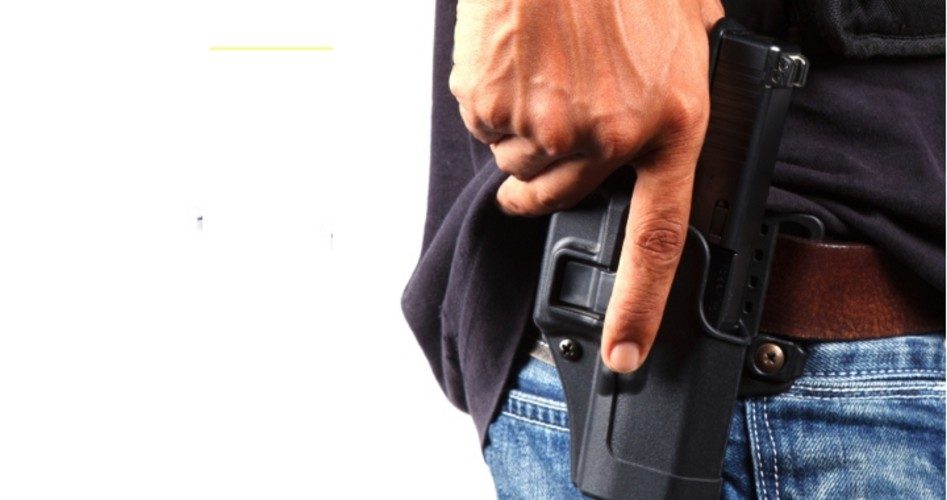
The release of the latest data from the ATF (Bureau of Alcohol, Tobacco, Firearms and Explosives) showing that gun manufacturers doubled their output of handguns, rifles, and shotguns in the three years between 2010 and 2013 (the latest year for which data is available) caused both rejoicing and consternation among participants in the long war against guns.
In 2010, America’s firearms industry produced 5,460,000 guns while in 2013 that number jumped to 10,840,000. And this despite (or perhaps because of) pressure from the Obama administration to restrict gun ownership among law-abiding citizens. Efforts to impose new background checks, and ban “military-style assault weapons” and their “high-capacity” magazines all failed, even during years when Democrats controlled both houses of Congress.
The president, frustrated at his lack of success, moved to the use of his pen, issuing executive orders to implement as much of his agenda as possible, including nominating B. Todd Jones to head up the ATF. Jones botched his assignment so badly — attempting to ban the popular “green tip” ammo used in the popular AR15 semi-automatic rifle — that his “framework” proposal went down in flames, and he quit his position immediately thereafter.
John Lott, author of More Guns, Less Crime, and president of his Crime Prevention Research Center, said all of this reflects the massive sea-change in attitude toward gun ownership that has taken place over the last few years. According to Lott, in 2000, more than half of Americans believed that ownership of guns made homes more dangerous. But by 2014, that number dropped to 30 percent while more than 63 percent now say the presence of a gun in the home makes that home more safe. Said Lott: “My own personal belief is that [this] change in beliefs about guns and safety has served as the basis for why you see increasing opposition to gun control during that same period of time.”
For Brandon Combs, who is active in several gun groups in California, the surge in interest in guns and safety is a mystery. In March, nearly 200,000 gun-purchase background checks were made in his state, shattering all previous records. After all, he said, “There are no big gun bills, there’s no big scare.” He tried to suggest possible rationale: People were spending their income tax refunds on guns; they have recovered from their Christmas holiday spending binge; the weather is nice; and so on. Regardless, at the end of 2014 there were about 70,000 Californians already licensed to carry concealed in the state, with another 15,000 to 20,000 applications pending. Combs noted: “California is working its way toward its first 100,000-license year ever.”
Any listing of pro-gun, pro-Second Amendment victories during the Obama administration would be incomplete, as they are occurring so rapidly. Washington, D.C., dropped its appeal of a court ruling that its handgun ban is unconstitutional, in order to prepare to defend its unconstitutional concealed carry application process. In February, the infamously liberal Federal 9th Circuit Court of Appeals struck down a similarly unconstitutional requirement in California that applicants for permits must show a “need” beyond just an interest in self-protection.
The gun-buying surge could perhaps be traced back to the Supreme Court’s ruling in District of Columbia v. Heller in 2008 that the Second Amendment guarantees an individual’s right to keep and bear arms. That was followed by McDonald v. City of Chicago in 2010 that the Second Amendment’s right to keep and bear arms applies to the states as well.
A surge in pro-gun legislation being enacted at the state level was first reflected in 2009, when both Arizona and Tennessee passed laws allowing citizens to carry concealed in places serving alcohol. In 2010, Louisiana approved a bill granting its citizens the freedom to carry sidearms in churches, while Arizona passed a law letting people carry concealed without a permit. Wyoming passed a similar law in 2011.
That same year, Mississippi enacted legislation allowing its citizens to carry firearms on college campuses, in bars, and in churches, later expanding that law to include sporting events, polling places, airports, courthouses, and other government facilities.
In 2011, Pennsylvania, Wisconsin, and New Hampshire passed “stand your ground” laws that state that an individual has no duty to retreat from any place where he has a right to be, and may defend himself, with lethal force if necessary, if he reasonably believes he faces an imminent and immediate threat of serious bodily injury or death. Forty-six states have now adopted “Castle Doctrine” laws, which hold a homeowner innocent in cases where he uses force to defend himself against an intruder in his home, using the same “imminent and immediate threat” standard of “stand your ground” laws.
Pro-gun momentum continued with victories in the November 2014 midterm elections. The National Rifle Association’s Political Victory Fund celebrated them, noting that connections to “anti-gun billionaire Michael Bloomberg [were] proven to be a political liability,” and counting off victories in Arkansas, Colorado, Georgia, Kansas, Kentucky, Iowa, Montana, Nebraska, North Carolina, South Dakota, and West Virginia. It added:
The NRA was pivotal in re-electing pro-gun governors in Florida, Georgia, Idaho, Kansas, Texas and Wisconsin, and in ousting a Bloomberg-backed anti-gun governor in Maryland.
In addition, the NRA had great success in races for the U.S. House.
In sum, the report from the ATF that American gun makers continue to set production records merely confirms the sea-change in attitude toward guns, gun ownership, and the importance of defending against criminals, both local and national. As that understanding grows, more and more vehicles are sporting the sticker: “The Second Amendment: The One that Insures all the Others.”
A graduate of an Ivy League school and a former investment advisor, Bob is a regular contributor to The New American magazine and blogs frequently at www.LightFromTheRight.com, primarily on economics and politics.
Related article:
Kansas Is the Next State to Allow Permitless Open Carry



